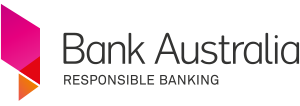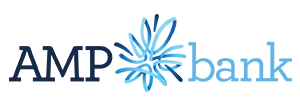Bank Australia offers a variety of savings accounts to cater to different customer needs.
The bank focuses on ethical and sustainable banking, ensuring that customer funds are not invested in industries like fossil fuels, gambling, or tobacco products.
However, it's important to note that Bank Australia has fewer ATMs and branches compared to larger banks, which could be a drawback for some customers.
The main types of savings accounts and their key features are as follows:
Bank Australia savings accounts review
|
Product |
Unique features |
Bonus interest criteria |
|
Bonus Saver |
Encourages saving with higher interest for meeting conditions |
Deposit at least $100 and make no withdrawals each month. Maximum interest only applicable to balances under $250,000. The maximum interest rate drops by 10 basis points for every $250,000 thereafter. |
|
Online Saver |
Easy online access with a flat interest rate |
N/A |
|
mySaver |
Designed for under 25s with a higher interest rate for smaller balances |
Deposit at least $10 and make no withdrawals each month. Account available only to customers under 25 years of age. Maximum interest rate applicable to balances of up to $50,000. |
|
Christmas Saver |
Allows saving throughout the year with funds accessible from November |
N/A |
Bank Australia allows customers to open multiple savings and transaction accounts, and all of its savings account offerings can be opened as joint accounts.
Bonus Saver
This account encourages saving by offering a higher interest rate when certain conditions are met.
The interest rate structure for the Bonus Saver account is variable, with its top rate applicable on balances up to $250,000, decreasing slightly for higher balances.
To qualify for the bonus interest rate, a deposit of at least $100 must be made each month without any withdrawals.
If the conditions for bonus interest aren't met, the interest rate drops to a low base rate.
Online Saver
This account is designed for easy online access and offers a flat, relatively average interest rate for balances over $5,000, no matter the savings habits of the account holder.
mySaver
Targeted at customers aged over 13 and under 25, the mySaver account offers a competitive bonus interest rate for balances of up to $50,000, with bonus rates decreasing for higher balances.
To earn the higher interest rate, a deposit of at least $10 must be made each month without any withdrawals.
The mySaver also does not have a monthly fee but includes fees for staff-assisted transactions and other standard fees.
When a holder of a mySaver account turns 25, the account transforms into a Bonus Saver.
Christmas Saver
A unique offering from Bank Australia, this account allows customers to save throughout the year and access their funds from 1 November.
The interest rate for this account is relatively low and available on any balance.
The account doesn’t have any monthly fees.
Bank Australia savings account fees
The following table provides a detailed overview of the fees and charges associated with various savings accounts offered by Bank Australia.
This includes information on monthly fees, staff-assisted transaction fees, and any additional charges that might apply to each account type.
Understanding these fees is crucial for consumers to effectively manage their savings and avoid unexpected costs.
|
Product |
Fees & charges |
|
Bonus Saver |
No monthly fee Staff-assisted transaction: $2.50 Exceeding available funds fee: $10 plus Debit interest rate Dishonour fee: $12 |
|
Online Saver |
No monthly fee Staff-assisted transaction: $2.50 Exceeding available funds fee: $10 plus Debit interest rate Dishonour fee: $12 |
|
mySaver |
No monthly fee Staff-assisted transaction: $2.50 Exceeding available funds fee: $10 plus Debit interest rate Dishonour fee: $12 |
|
Christmas Saver |
No monthly fee Staff-assisted transaction: $2.50 Exceeding available funds fee: $10 plus Debit interest rate Dishonour fee: $12 |
What do you need to open a savings account with Bank Australia?
In terms of eligibility, opening a savings account with Bank Australia typically requires standard identification documents like a drivers licence or passport, and a Medicare card. Providing a Tax File Number is also recommended to avoid the maximum marginal tax rate being charged on interest earned.








